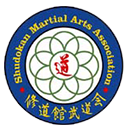Wado Ryu Karate-do
By Cimino-Hurt, MichaelThis article first appeared in the "SMAA Journal" Volume 17, Issue 2.
Have you ever heard of wado ryu karate-do?
How does its history influence modern karate?
Modern karate-do has its beginnings so far in the past that its earliest history is lost. What we do know is that the roots of Wado Ryu come from the martial arts traditions of China, Okinawa, and Japan. Those elements came together in the last century due to the efforts of a most amazing Japanese martial artist named Ohtsuka Hironori Sensei, or as Westerners would say it, Hironori Ohtsuka.
Karate is a term, which originally meant, "T'anghand.” This is in reference to the T'ang Dynasty of China from which the Okinawans adapted many karate-do concepts. In the 15th and 16th centuries, the Okinawans had developed a system of unarmed combat called Okinawa te or tode. This art was supposedly enhanced by the influence of Chinese emissaries in the 17th century, who introduced kata, or “forms,” and other Chinese principles.
Among the kata believed to have been introduced were, notably, Kushanku and Chinto, which were supposedly named after the men who introduced them. This was at a time when Okinawa had come under the control of Japan, and Okinawans were required to surrender their weapons on pain of death.
The empty-handed fighting arts may have been studied so that the Okinawans might defend themselves from their conquerors. More recent investigation reveals that the empty-handed fighting systems of Okinawa were probably developed by the Pechin class, who were responsible for law-and-order as well as for the military.
Okinawa te is often described as having developed in three main areas around the towns of Naha, Tomari, and Shuri, and it was taught secretly for centuries, usually within families. We often associate different emphasis in internal, external, and linear techniques as being representative of the tode from these three areas. Over time, this art also came to be called karate-jutsu (“Chinese-hand art”).
Master Ohtsuka Hironori, who had studied Shindo Yoshin Ryu jujutsu from an early age, intentionally made his karate-do as Japanese as possible. He also discarded techniques that he felt were ineffective and added much of his jujutsu technique. Due to Master Ohtsuka's commitment and innovation of technique, Wado Ryu has rapidly become one of the most popular karate-do systems throughout the world, and its early acceptance of jiyu kumite has enabled it to be very successful in competition.
The emphasis on developing the whole body through regular exercise and training make karate-do an excellent means of promoting good general health, and the self-defense techniques build confidence and promote personal security. Ohtsuka Sensei, who died in January 1982, once said, "The difference between the possible and the impossible is one's will." He practiced karate-do daily until his death at the age of 89.
Learn More about Martial Arts History at an International Martial Arts Association
If you’re looking for an international martial arts association dedicated to preserving the authentic Japanese arts, you’re in the right place!
SMAA offers certification in authentic aikido, iaido, judo, jujutsu, and karate-do. If you’re interested in becoming a member, call (734) 720-0330 or submit a contact form here. We would love to add you to our ranks!

